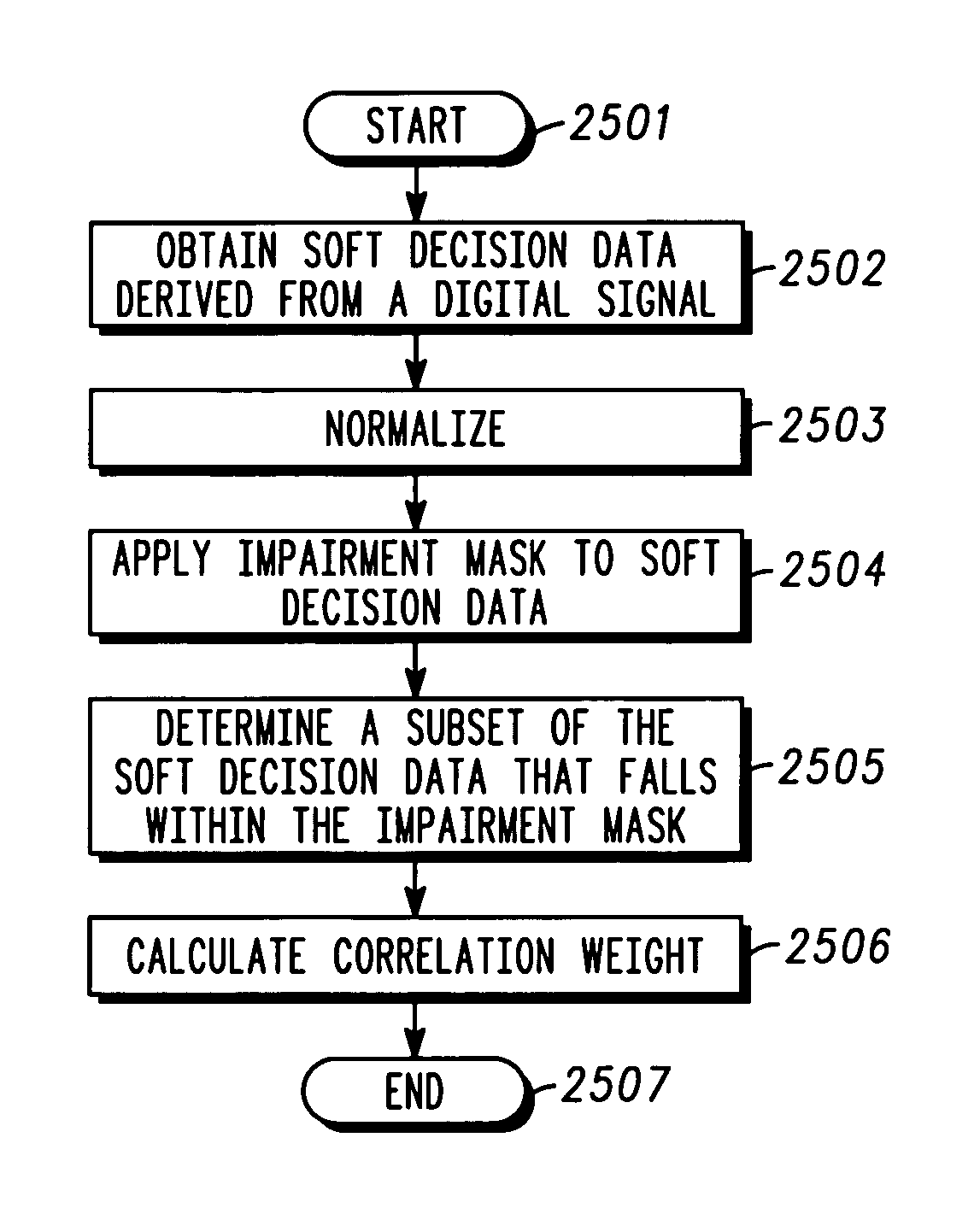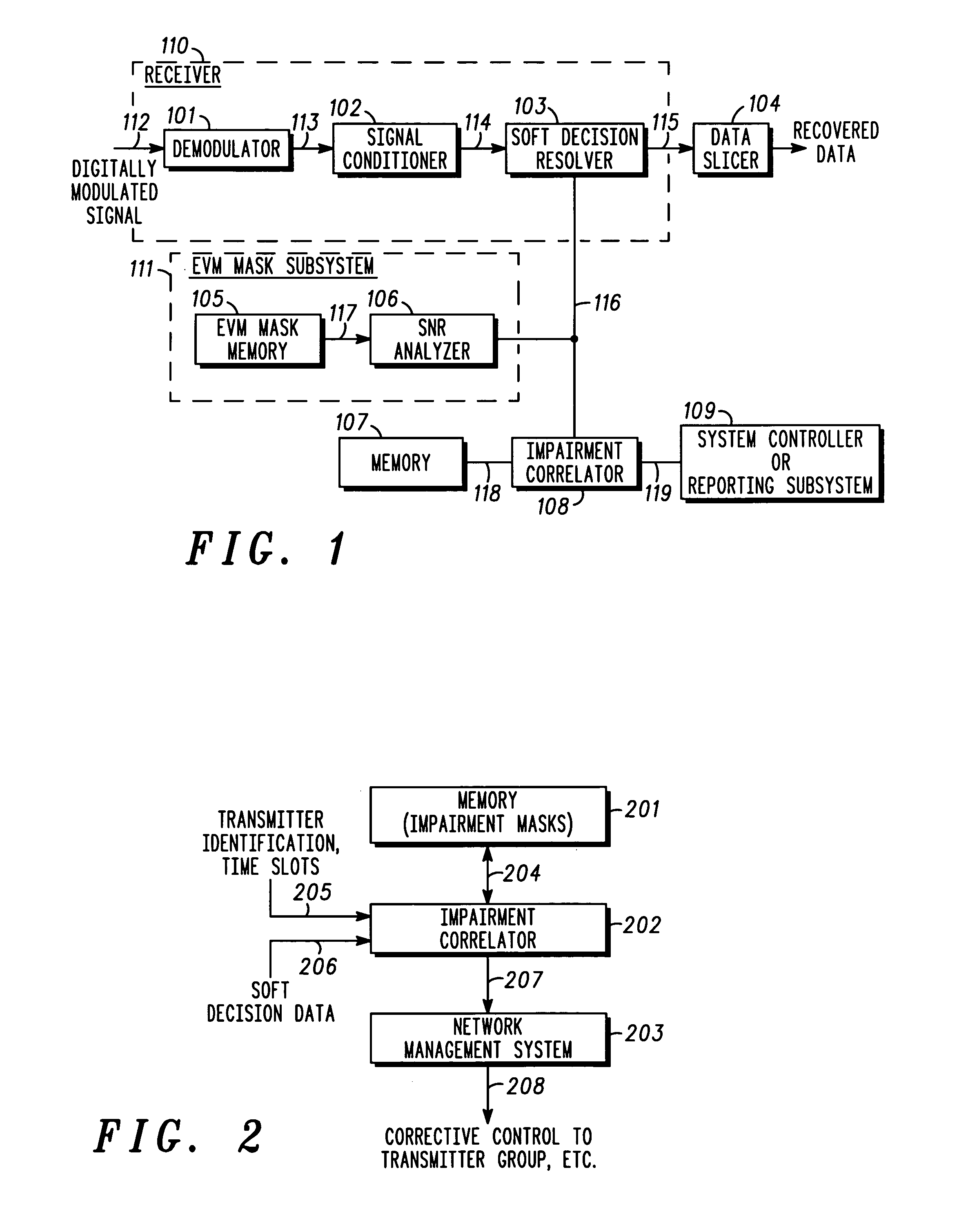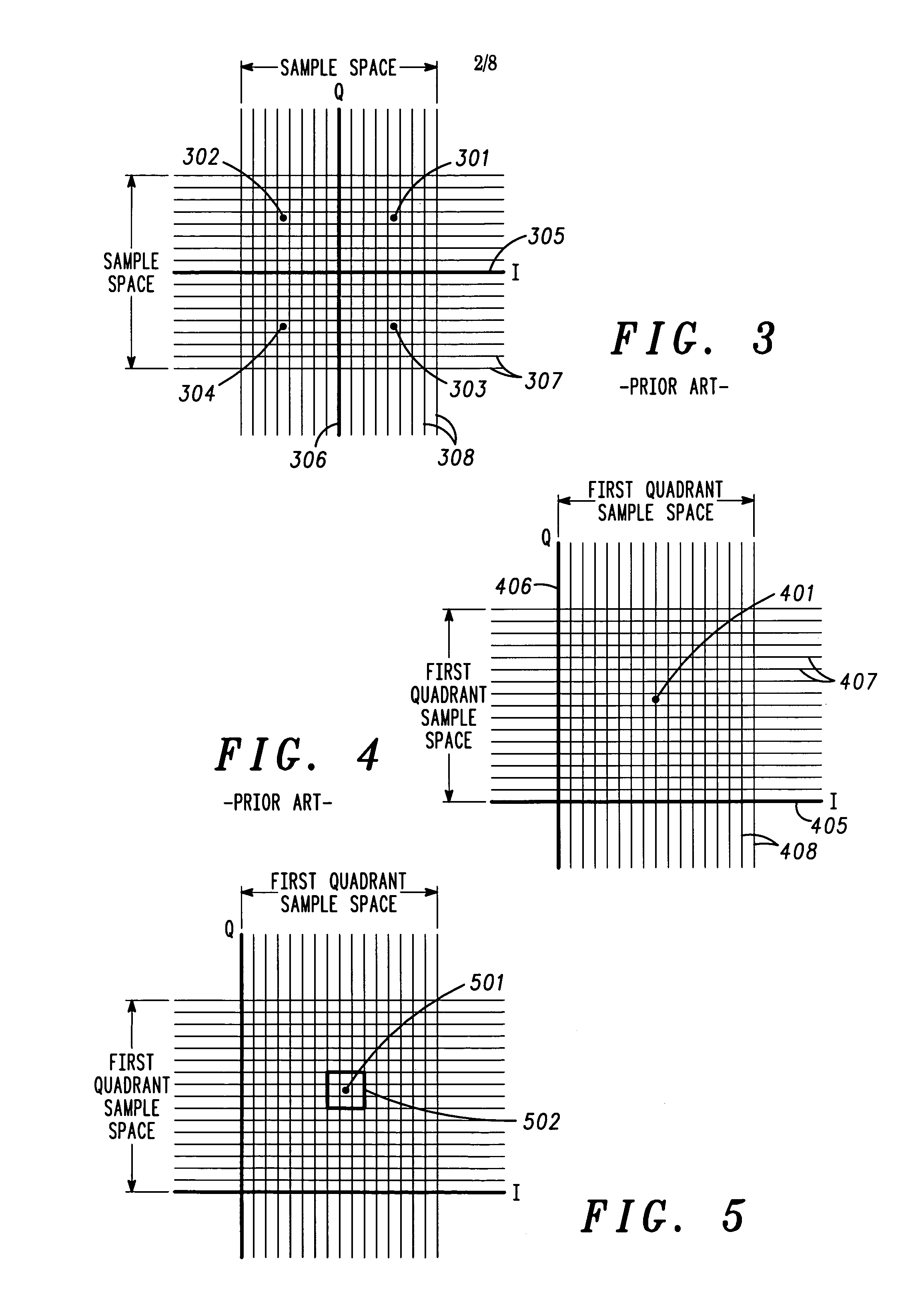Method and apparatus for automated correlation of digital modulation impairment
a digital modulation and impairment technology, applied in the field of electronic signal receivers, can solve the problems of multiple types of impairment, angular displacement, and impairment that affects the location of the received symbol on the i/, and achieves the effect of reducing the number of impairments
- Summary
- Abstract
- Description
- Claims
- Application Information
AI Technical Summary
Problems solved by technology
Method used
Image
Examples
Embodiment Construction
[0038]A method and apparatus for automated correlation of digital modulation impairment is described. The technique obtains soft decision data and extracts signal space location information of sufficient resolution to distinguish different types of impairment to a digitally modulated signal. The technique applies an error vector magnitude mask and determines the signal-to-noise ratio (SNR) of the digitally modulated signal. The technique applies impairment masks and characterizes impairment affecting the digitally modulated signal. The technique may be used to identify, isolate, and classify different types of impairment in a manner that does not result in service interruptions. Both symbol-level and constellation-level impairment can be correlated. Given sufficient data collection, sources of impairments may be determined. For example, subscriber impairments may be distinguished from system impairments, and individual subscriber faults may be identified.
[0039]The invention avoids t...
PUM
 Login to View More
Login to View More Abstract
Description
Claims
Application Information
 Login to View More
Login to View More - R&D
- Intellectual Property
- Life Sciences
- Materials
- Tech Scout
- Unparalleled Data Quality
- Higher Quality Content
- 60% Fewer Hallucinations
Browse by: Latest US Patents, China's latest patents, Technical Efficacy Thesaurus, Application Domain, Technology Topic, Popular Technical Reports.
© 2025 PatSnap. All rights reserved.Legal|Privacy policy|Modern Slavery Act Transparency Statement|Sitemap|About US| Contact US: help@patsnap.com



